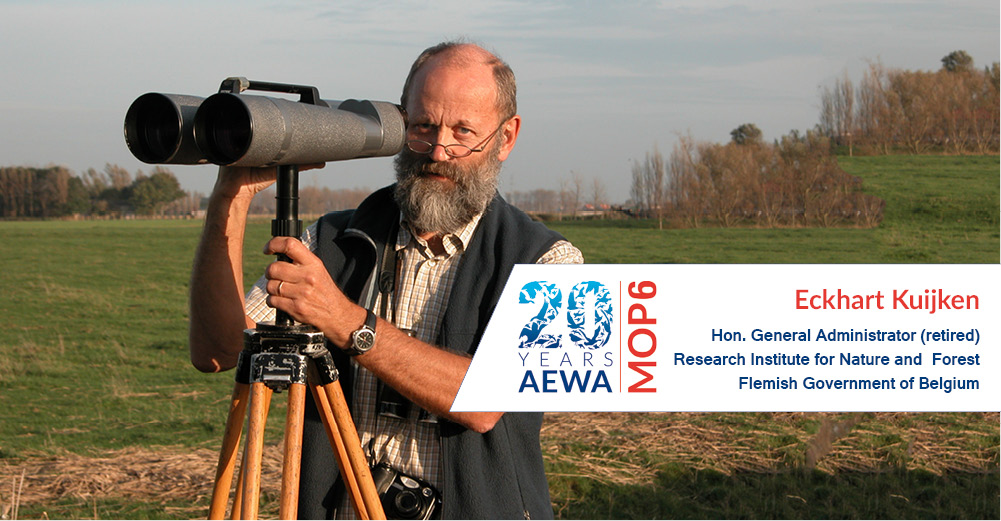People behind AEWA - Eckhart Kuijken

Eckhart Kuijken, Hon. General Administrator (retired), Research Institute for Nature and Forest, Flemish Government of Belgium © Christine Verscheure
Bonn, 3 December 2015 - Wintering geese and waterbird conservation have been the subject of Professor Kuijken’s research as well as a passion for more than half a century. He had the privilege of first contacting IWRB (now Wetlands International) in the mid-sixties, when the first international waterfowl counts started and an Annual meeting in Belgium (Knokke) was organized in 1970. As a board member Professor Kuijken enjoyed the discussions with Sir Peter Scott, Dr. Luc Hofmann, Professor Geoffrey Matthews, Professor Jozef Szijj, Eric Carp and many others. The most important agenda item was the drafting of a wetland convention; especially the criteria for selecting wetlands of international importance was a critical matter: should 1% or 2% of a waterbird population be used as the critical level? Fortunately 1% won through.
The Wetland Convention was launched in 1971 at the International Waterfowl Conference held in Ramsar, Iran, with delegates of only 18 countries, some NGOs and other observers. As the youngest participant, Professor Kuijken presented the first overview of Belgium’s Wetlands of international importance. From this perspective Professor Kuijken could follow the development of both IWRB and the Ramsar Convention and support the activities in the following decades. The more wetlands became threatened, the more important the knowledge of their multiple functions and the development of conservation programmes became.
One of the successful initiatives was the launch of AEWA under the Bonn Convention in 1995. Although many of the people concerned were already active in the field of waterbird surveys and conservation, scientists, specialists and volunteers met each other with a well defined goal: safeguarding the intercontinental flyways of critical species from the Palearctic breeding areas to their wintering regions, many of them situated in Africa. This Agreement is fully complementary to the endeavours of the Ramsar Convention and thus reinforces international treaties and the work of organizations such as Wetlands International and the IUCN.
Especially the species action plans of AEWA summarized in scientific reports represent valuable instruments for management in the field, bringing together stakeholders to agree upon a conservation strategy for waterbirds that are critically endangered or have restricted flyways with a limited number of suitable sites for breeding, migration or wintering.
“After 20 years of action I hope the AEWA approach can continue to safeguard our living heritage. It has always been a great pleasure to work together with key people and good friends such as Gerard Boere, Sergey Dereliev and many others” says Professor Kuijken.
Professor Kuijken’s favourite species is the Pink-footed Goose (Anser brachyrhynchus). Having discovered almost 55 years ago that the birds occur regularly in Flanders, Belgium, the professor and his wife, Christine have succeeded in continuing the monthly monitoring in the geese’s exclusive wintering area of the Oostkustpolders, north of Bruges.
Last updated on 04 December 2015



